If you say that coffee is accompanied by sugar cubes, then the street light is accompanied by its lamppost. The lamp post, which is an essential component of street lighting, is often forgotten despite people's focus on the brightness of the street light bulb. Today I'm going to tell the story of the lamp post.
First, let's look at the standards that should be used for street lamps.

Lamppost Pattern
Light post height:
Typically, workers examine and evaluate different environments to determine appropriate parameters for streetlights based on the brightness of the LED light source.
Application scenario: Most scenic areas use solar garden lights, which require lower heights of lamp posts.
Light pole material:
For example, steel structures are commonly used along roads to ensure the sturdiness of lamp posts. However, in scenic areas, simple streetlights are sufficient, as collisions and other incidents are unlikely to occur.
These standards are a combination of strict industry requirements and practical knowledge gained from years of production experience by companies.
Note: The main consideration when selecting a lamp post should be safety.
Type of lamppost
Light poles can be divided into iron light poles, FRP light poles, cement poles and aluminum alloy poles according to their materials.
Iron lamp post
The advantages of iron lamp post
- High strength
The dis advantages of iron lamp post
- Easy to corrode and rust;
- The weight is three times that of aluminum and transportation and installation costs are high;
- Limited recycling value;
- Do not use plugin installation;
- The surface treatment method is monotonous.
FRP light pole
The advantages of FRP light pole:
- Light weight and easy installation;
- Plugin installation is available.
Disadvantages of FRP light poles:
- Short shelf life;
- No recycling value, very difficult and expensive to dispose of;
- Ultraviolet damage to the stem is very serious;
- Maintenance costs are too high;
- Easy to be damaged by external equipment.
Cement lamp post
Advantages of cement lamp post:
- Plugin installation can be used;
- Good strength;
- No need to spray.
Disadvantages of cement lamp posts:
- Very heavy, which leads to high transport costs;
- No recycling value;
- Installation equipment is expensive and difficult to install;
- Dangerous than other materials.
aluminum pole
Advantages of aluminum pole:
- Good anti-corrosion performance
- Maintenance free
- Light weight, convenient for transportation and installation
- Various surface treatment methods
- Longer life than iron and FRP light poles
- 100% recycling, low melting temperature, energy saving and emission reduction
- Plugin installation is available
- Smaller amplitude than glass fiber reinforced plastic lamp post
Disadvantages of aluminum alloy poles:
Compared to iron poles, aluminum alloy poles have lower strength, but can reach T6 standards through post-heat treatment.
Due to its numerous advantages and superiority over other materials, aluminum alloy poles are widely used in developed countries such as Europe and America.
Now that we understand the patterns, let's see how lamp posts are made!
Lamppost production process
1. Sheet metal cutting
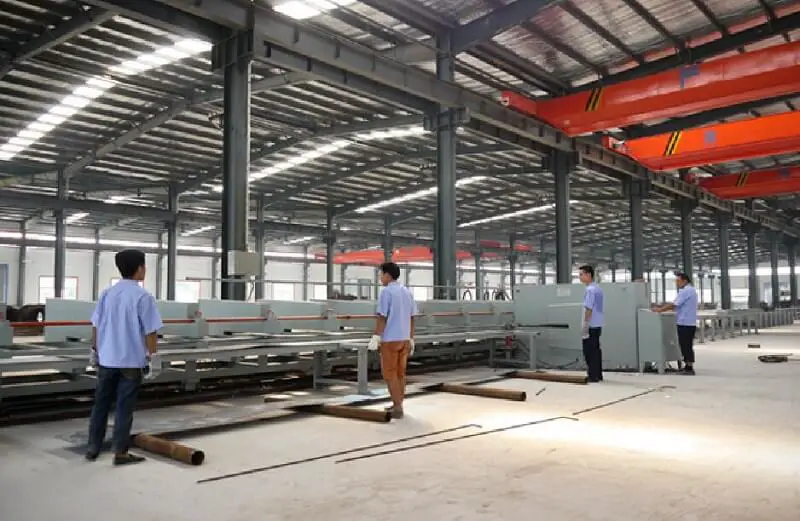
The cutting process involves several automatic plasma cuts, producing fine incisions with a maximum width of 1mm, creating favorable conditions for further processes.
Before cutting, the cutter inclination and required cutting size are adjusted. The position of the steel plate is determined to maximize the remaining material that can be utilized.
The length dimension is guaranteed during unwinding and the bottom wide dimension should not be more than 2mm. The tolerance for the cut size is positive for each section of the lamp post, typically 0 to 2 mm, with a negative tolerance for the small head. After size adjustment, cutting is finished on a strip cutting machine and an automatic cutting machine.

Regarding equipment, it is important to inspect the operation of the shearing equipment while unwinding material and remove any debris from the track to ensure the equipment is in good working order.
2. Curvature formation
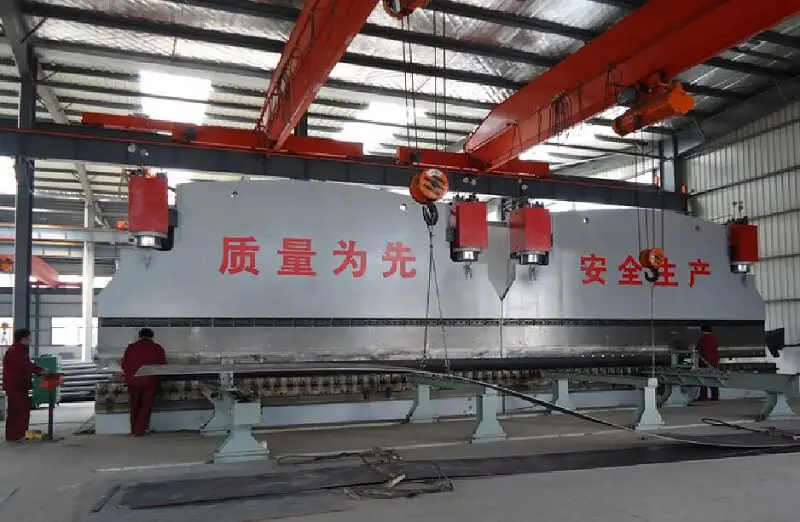
A 12-meter CNC hydraulic press brake is used for forming, with high control precision and a beautiful shape for the lamp post. The roundness should not exceed 1mm, resulting in a smooth appearance and the ability to form more than 12 meters at one time.
The forming process is a crucial step and must be carried out on a CNC hydraulic press brake.
Compared with traditional press brakes, the CNC press brake offers greater precision and speed, with the ability to perform automatic deviation and direct angle calculation.
Therefore, whenever possible, it is preferable to use a CNC press brake for the forming step.
Bending is the most critical step in the production of light poles, as the quality of the bend directly impacts the quality of the light pole and cannot be repaired after bending.
The following points require special attention:
Before bending: Make sure the sheet is free of slag to avoid crushing the mold during bending.
Check the length, width and straightness of the sheet, with a straightness requirement of ≤1/1000. If the straightness does not meet the requirement, it must be corrected, especially for polygonal rods that must be straight.
Increase the bending depth of the machine to determine the position of the sheet.
Mark the sheet correctly, with an error tolerance of ≤ ±1mm.
Align the sheet correctly and bend accurately to minimize the tube seam, ensuring that the height difference between the two sides is no more than 5 mm.
3. C elding
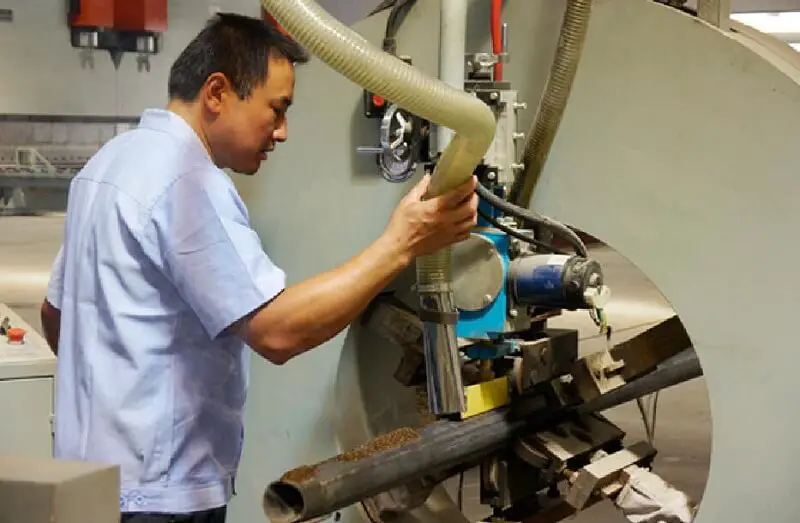
The welding process is carried out on a CNC automatic closing machine, resulting in a uniform surface with the welding seam formed in one go.
This device combines clamping and welding functions, overcoming the traditional straight weld integrity problems caused by spot welding.
Straight seam welding is performed on the bent seam of the pipe during the welding process.
As it is an automatic arc welding process, the welder must be diligent in his responsibilities.
When welding, it is important to adjust the welding position to ensure a straight weld.
4. Repairing & Grinding
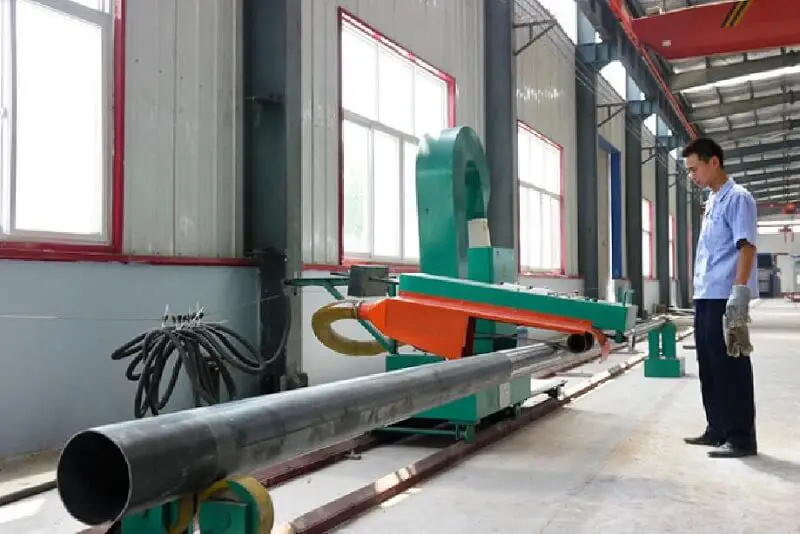
Repair and rectification involves correcting any defects in the pipe blank after automatic welding.
The person responsible for the repair must thoroughly inspect each post and identify any defects that need to be repaired.
Once the repair welding is completed, grinding is carried out.
The repaired joint should look similar to that of automatic welding.
5. Modeling
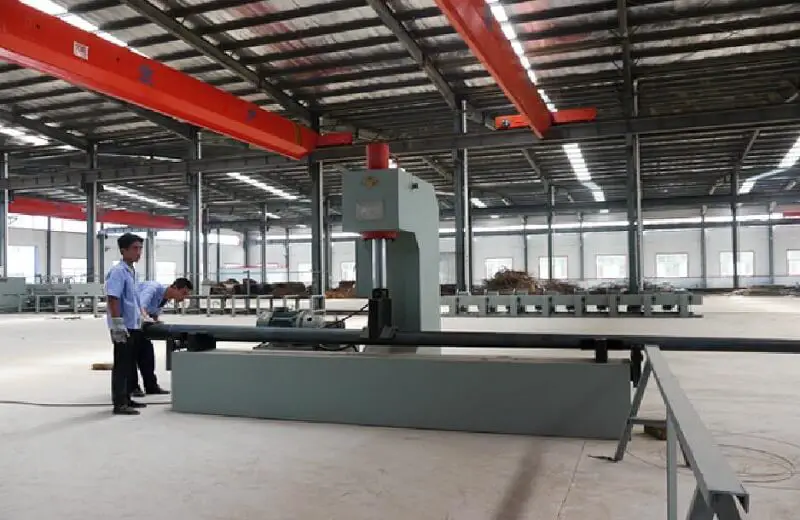
Throughout the production process, modeling occurs twice.
The first time is after the longitudinal welding of the light pole is completed, which helps ensure welding accuracy and consistency in appearance across the entire batch of light poles.
The second forming is performed after galvanizing and before spraying to eliminate bending of the light pole caused by thermal stress during hot-dip galvanizing.
The finished product must have a straightness of no more than 1‰ and a total length difference of no more than 5mm.
The modeling process includes straightening the light pole, rounding both ends of the empty pole, and adjusting the polygonal diagonal dimension.
The general tolerance is <±2mm, and the straightness error of the blank post should not exceed ≤±1.5/1000.
6. Flatten the end face
The end face leveling process involves smoothing both ends of the bent pipe to ensure the nozzle is perpendicular to the centerline and there are no irregularities in angle or height.
After flattening, the end face is polished.
7. Welding of the bottom flange and rib plate
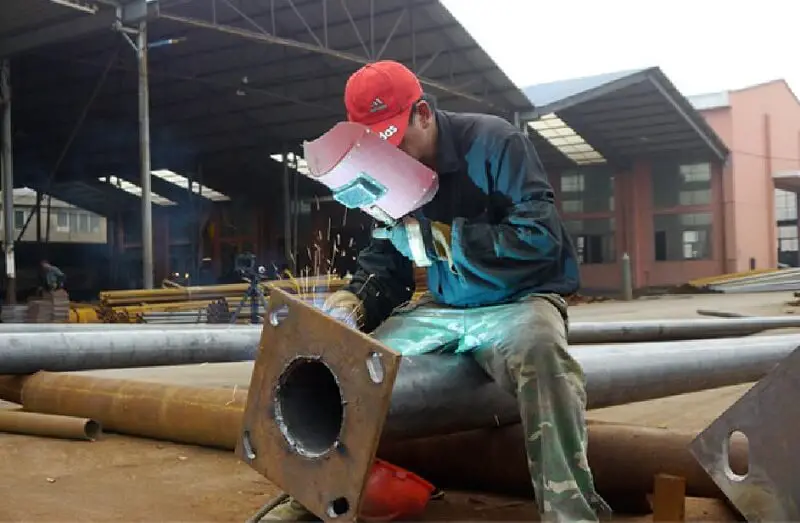
The key to spot welding the bottom flange and rib plate is to ensure that the bottom flange is perpendicular to the straight centerline of the light pole, the rib plate is perpendicular to the bottom flange, and flat with the straight axis of the light pole .
8. Opening door
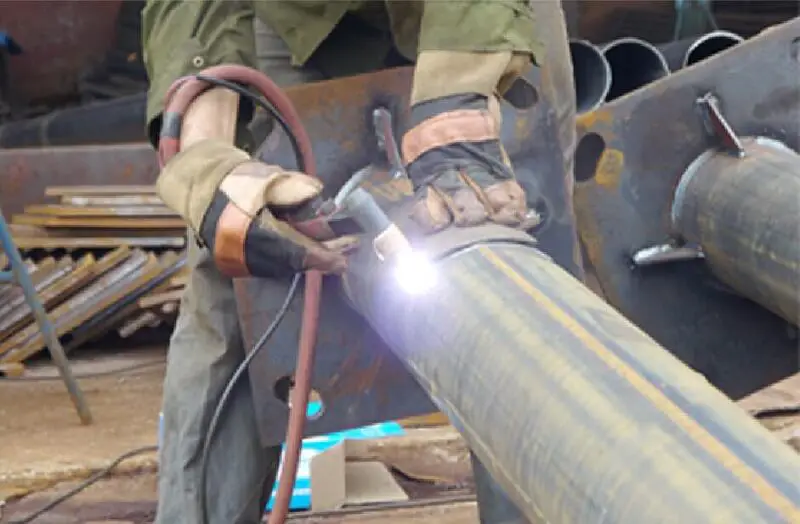
In this process, both boldness and caution are necessary.
Firstly, the direction of the door must be determined by referring to the drawing and then positioned according to the specified dimensions.
These dimensions include up and down, left and right, and door frame size.
Care must be taken during plasma cutting to ensure a straight cutting line, and the door panel and lamp post must be welded accordingly.
9. Welding door strip, electric bar, latch seat
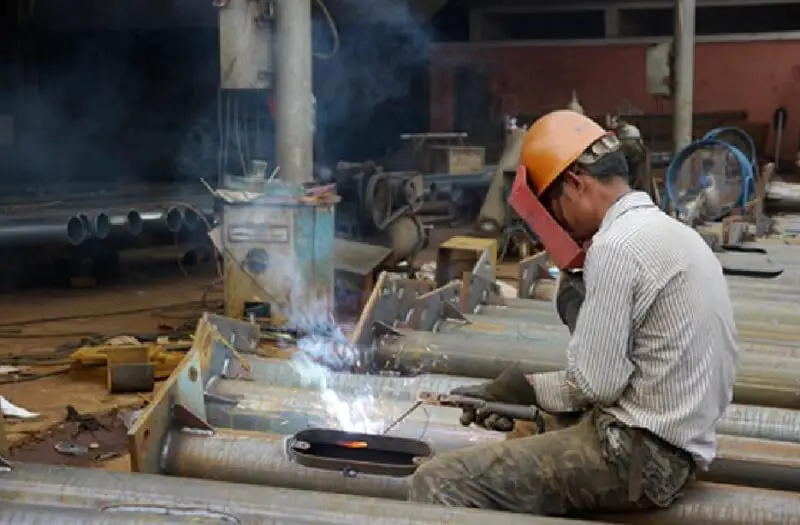
When welding a 40mm wide door strip, it is important to straighten the designed position by 8 to 10mm, especially during spot welding. The door strip must be close to the lamp post, and the welding must be safe.
The welding of the electrical tape and the lock base is determined according to the drawing.
The base of the lock must be welded in the middle of the door with an error tolerance of ≤ ±2mm, and must be level and not exceed the height of the lamp post.
10. Bend the fork
The fork bending process shares the same characteristics as the door opening process and requires boldness and caution.
Firstly, attention should be paid to the direction of the door, secondly to the starting point, thirdly to the fork angle and pulling speed.
Avoid blinking to ensure 100% performance.
11. Galvanized
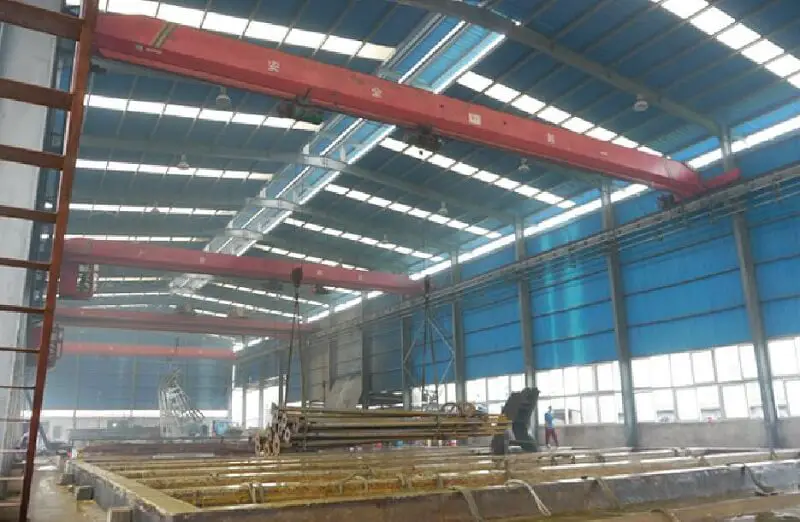
The quality of the galvanization has a direct impact on the quality of the light pole.
After galvanizing, the surface must be smooth and uniform in color.
There should be no sagging. If a light pole has significant sagging, it must be re-galvanized.
Inspection before galvanizing
Before galvanizing, the surface of the lamp post is carefully checked for paint or welding residue, and if any, it must be cleaned.
Pickling
The surface of the lamp post must undergo the necessary degreasing treatment.
It should be immersed in the degreasing solution for 15-30 minutes to remove the oil and then cleaned in the washing pool more than twice.
The surface of the lamp post must be cleaned from the oxide layer.
It must be immersed in hydrochloric acid for 20-40 minutes to remove the oxide layer.
If there is an oxide layer located on the surface, it should be treated with a tool and then pickled for 15 minutes.
After pickling, the acid ions on the surface of the lamp post must be removed in the cleaning tank, and it must be cleaned more than twice.
Zinc Additive
Once the lamp post has been cleaned, it must undergo zinc treatment in the auxiliary zinc bath, with a controlled temperature between 60-70°C for 3 minutes.
Zinc-supporting ingredients should be analyzed every 4 hours.
Galvanization
After cooling with water, to prevent the formation of white rust (zinc oxide) on the galvanized surface, a chromic acid treatment must be applied to the galvanized surface.
This will result in a yellow passivation liquid on the surface, which will disappear naturally after exposure to rain.
12. Spray
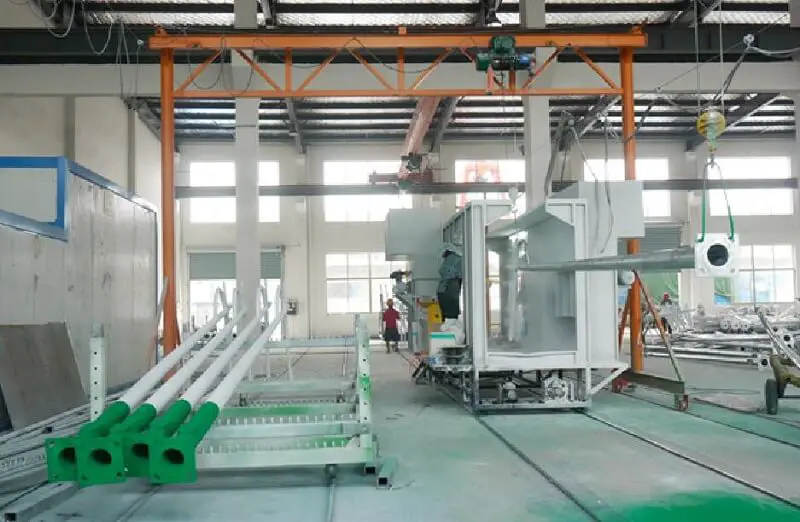
The purpose of spraying is to be beautiful and prevent corrosion.
Polishing
The surface of the galvanized rod should be polished with a polishing wheel to ensure that the surface of the light rod is smooth and flat.
Straighten up
The polished lamp post should be stretched and formed into a mouth shape. The straightness of the lamp post should be 1/1000.
The caliber requirements are: small shank ≤ ± 1mm; high stem ≤ ± 2mm.
The following process requirements must be followed:
(1) Strictly comply with the requirements of the plastic spraying process after galvanizing.
A spray technology should be applied to the rod body before spraying to increase adhesion without damaging the hot-dip galvanized layer.
(2) Strictly control the curing time and temperature to ensure that the plastic layer is uniform, smooth and free of pores.
13. Equip door
(1) The power distribution port is cut by a CNC plasma cutting machine, which provides high precision and precise cutting, and is integrated into the rod body.
(2) There is a grounding device and grounding wire inside the pole door.
14. Install the door panel
After galvanizing all door panels, processing includes hanging zinc, leak-proof zinc and keyhole zinc storage.
When drilling screw holes, the electric drill must be perpendicular to the door panel, with equal gaps around the door panel, and the door panel must be flat.
After fixing the screws, the door panel must not be loose and the support must be strong to prevent it from falling during transport.
Plastic spraying powder: The light pole with the door is placed in the spraying room, and the color of the plastic powder is sprayed according to the production plan. It is then transferred to the drying room. The temperature and retention time of the drying room must be strictly in accordance with the requirements of plastic powder to ensure that requirements such as powder adhesion and finish are met.
15. Factory inspection

The production process for public lighting poles is as follows:
Factory inspections are carried out by quality inspectors who inspect each item one by one according to the items tested for the lamp posts. Inspectors must record and archive their findings at the same time.
This is the production process of lamp posts. Have you gained a new understanding of street lights?
Final thoughts
Finally, I would like to remind you that when choosing a pole for public lighting, it is important to consider the specific conditions of the location. Different positions may require lamp posts with different specifications, with the aim of obtaining the most efficient lighting while minimizing costs.
If you want to purchase the equipment to build a light pole production line, please contact us for a quote.

























































